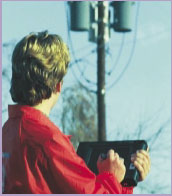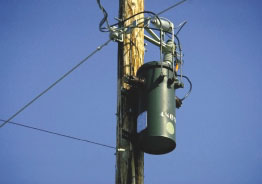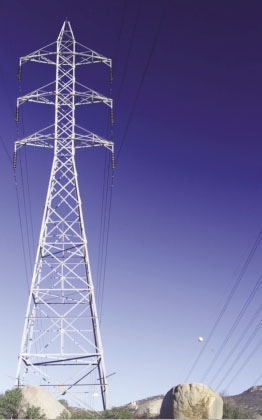Background
Everywhere you look, electric utilities are reorganizing to streamline their businesses in an attempt to react more quickly, become more efficient, accomplish more with less – and generally operate more like competitive businesses and less like traditional, regulated utilities.
Mergers and acquisitions have been prevalent within the utility industry for many years. When utilities merge, many of the newly combined companies go through a process of reviewing all resources that were previously controlled by the individual companies. After thorough review, those resources best suited for the combined company are identified.
This review and selection process is used for nearly all types of resources within the utility environment, including automated tools and information systems.
Review and selection of the automated tools and information systems that are best suited to the combined company is, in nearly all cases, the best approach. The electric utility industry continues to undergo significant and rapid change in all corners of the world, and nearly all of these changes put pressures on companies to improve their business processes in order to remain competitive.
Goals of Consolidating Systems
Wise investments in information systems, if managed carefully, can provide significant relief from many of the pressures that electric utility companies are facing. The ongoing operating costs associated with maintenance and management of a single system will almost always be less than the costs for multiple systems.
One of the systems that has the highest potential for providing real performance gains for electric utilities during a merger is the Automated Mapping and Facilities Management or Geographic Information System (AM/FM/GIS).
During the merger process, the AM/FM/GIS systems within each of the individual companies are reviewed from a number of perspectives, such as functional richness, user acceptance, associated initial cost, ongoing operating expenses, and ease of integration with other corporate information systems. Another important factor is the size of investment in the existing data that has been converted, and the portability of that data to another platform.
AM/FM/GIS systems have often come at a fairly high investment, especially relative to the data conversion costs of capturing paper maps and records and converting that information into digital data. Sorting out the differentiating factors and making the right choice between the competing systems can lead to significant cost savings, not only at the time of the merger, but also in the ongoing operating costs going forward into the future.
The Decision Process
Many factors can influence the selection of the AM/FM/GIS solution best suited for the merged company. One significant factor is how merger initiatives are being handled regarding the information systems.
Some utilities have the internal expertise and understanding, as well as the availability of internal resources, to work through the comparisons and selection processes from within. Alternately, many utilities contract the services of outside consultants to manage the process of system review and selection. Both methods can result in positive outcomes, and both have their pitfalls.
The benefit of having internal experts from the two merged companies come together to select the system is that individuals with an up-close, in-depth understanding of the systems are involved in the decision process. Under these conditions, the true overall operating costs, as well as the difficulties associated with each system, can be best understood.
The pitfall is that individuals who are protecting turf may resort to politicking and lobbying. At times, the system that survives is the system whose owner or champion made the most noise in the selection meetings, or offered the best Champagne to senior management.
When external consultants are involved, they can provide good information on industry trends, as well as examples of system successes and failures from outside the walls of the merged companies. Unfortunately, those consulting groups can have presupposed opinions and/or allegiances relative to the systems they have been contracted to judge. And it’s hard to know if the industry trends exist before they are reported, or if they are driven by the associated industry consultants and the organizations in which they participate.
Whether the decision process is being driven from within the organization, or by external consultants, it is paramount that the decision owners within the utilities are involved in the process. Those individuals must have a clear understanding of true benefits and costs of both systems, and a first-hand knowledge of the capabilities and corporate longevity of the selected system.
Sometimes there is no decision. This can be the case when the merger is really an acquisition, and the merger process internally is handled more like a hostile takeover than two friendly organizations determining the best outcome. In many of those cases, the controlling company simply imposes its existing systems upon the company being acquired.
Cases to Study
Recent examples can be found of mergers where the identical two opposing AM/FM/GIS solutions were under review, and the opposite solutions were selected in each case. Did something go wrong in one of the processes? Were internal lobbyists the issue? Was the non-bias consultant actually bias?
Perhaps there was a problem, but it’s also possible that the relative maturity and level of integration with the other selected information system platforms was different for each case, and that the choices in each case were completely appropriate. Also, it’s possible that the modes of operation were just different enough that the system requirements were better met by one system.
In the case of one North American utility, a GIS solution was selected for two reasons. First, the AM/FM/GIS solution was operating with extremely low ongoing operating costs, which was a significant determining factor.
Secondly, the AM/FM/GIS system was extremely well integrated with the Work Management System within one of the organizations. When this is the case, efficiencies are gained due to the tight integration, and the resulting improvements in business process procedures are significant. The cost to rebuild an integrated solution that is as effective is too costly or too risky.
For instance, in the United Kingdom, a water utility with a very mature and extensive AM/FM/GIS solution recently merged with an electric utility. After the merger, the decision was made to extend the AM/FM/GIS solution to the electric utility. The fact that a very mature and functional solution existed was a driving factor in the selection process.
An interesting influencing factor in this case was the interoperability of the legacy solution with the current version of the GIS Solution. This allowed for collaboration of data from the water utility system, which was developed nearly 10 years prior, with data from the newly implemented electric utility system. The opportunity for collaboration between the two utility solutions – without forcing immediate upgrades on the legacy water utility implementation – provided real benefits in a shorter time frame.
Future Trends
Regulatory and competitive pressures will continue to force utilities to push for cost reductions and, where possible, to perform review and selection processes when time permits. Occasionally, utilities will be forced to move forward with two or more AM/FM/GIS solutions, due to pressure to continue uninterrupted operations and avoid the development costs of combining multiple platforms.
In these cases, the option of functioning with multiple AM/FM/GIS serverbased solutions - but adjusting the design interface so that it can operate from either platform - is becoming more of an option today. For instance, one vendor’s mapping interface can be coupled with a design solution in such a way that it can utilize data from a variety of AM/FM/GIS solutions, and also populate the completed design updates back to those solutions.
Additionally, web and field solutions are available today for publishing of data from various multi-vendor AM/FM/GIS solutions. This means that the users who are view-only in the office or field operations environment can utilize data from a variety of sources when utilities are forced to continue operating with multiple AM/FM/GIS Solutions.
This interoperability of tools with various back-end data sources will be a welcome trend as we move ahead into the future. Interoperability of user tools will provide more alternatives for merged companies to lessen the impact of homogenizing the post merger environment.
About the Author
Mr. Laslo worked in the Electric Utility Industry for 12 years and has spent the last 3 years at Autodesk developing the company’s electric utility sales and market focus as well as development and communication of its products and solutions capabilities for the Electric Utility Industry.
Everywhere you look, electric utilities are reorganizing to streamline their businesses in an attempt to react more quickly, become more efficient, accomplish more with less – and generally operate more like competitive businesses and less like traditional, regulated utilities.
Mergers and acquisitions have been prevalent within the utility industry for many years. When utilities merge, many of the newly combined companies go through a process of reviewing all resources that were previously controlled by the individual companies. After thorough review, those resources best suited for the combined company are identified.

This review and selection process is used for nearly all types of resources within the utility environment, including automated tools and information systems.
Review and selection of the automated tools and information systems that are best suited to the combined company is, in nearly all cases, the best approach. The electric utility industry continues to undergo significant and rapid change in all corners of the world, and nearly all of these changes put pressures on companies to improve their business processes in order to remain competitive.
Goals of Consolidating Systems
Wise investments in information systems, if managed carefully, can provide significant relief from many of the pressures that electric utility companies are facing. The ongoing operating costs associated with maintenance and management of a single system will almost always be less than the costs for multiple systems.
One of the systems that has the highest potential for providing real performance gains for electric utilities during a merger is the Automated Mapping and Facilities Management or Geographic Information System (AM/FM/GIS).

During the merger process, the AM/FM/GIS systems within each of the individual companies are reviewed from a number of perspectives, such as functional richness, user acceptance, associated initial cost, ongoing operating expenses, and ease of integration with other corporate information systems. Another important factor is the size of investment in the existing data that has been converted, and the portability of that data to another platform.
AM/FM/GIS systems have often come at a fairly high investment, especially relative to the data conversion costs of capturing paper maps and records and converting that information into digital data. Sorting out the differentiating factors and making the right choice between the competing systems can lead to significant cost savings, not only at the time of the merger, but also in the ongoing operating costs going forward into the future.

The Decision Process
Many factors can influence the selection of the AM/FM/GIS solution best suited for the merged company. One significant factor is how merger initiatives are being handled regarding the information systems.
Some utilities have the internal expertise and understanding, as well as the availability of internal resources, to work through the comparisons and selection processes from within. Alternately, many utilities contract the services of outside consultants to manage the process of system review and selection. Both methods can result in positive outcomes, and both have their pitfalls.

The benefit of having internal experts from the two merged companies come together to select the system is that individuals with an up-close, in-depth understanding of the systems are involved in the decision process. Under these conditions, the true overall operating costs, as well as the difficulties associated with each system, can be best understood.
The pitfall is that individuals who are protecting turf may resort to politicking and lobbying. At times, the system that survives is the system whose owner or champion made the most noise in the selection meetings, or offered the best Champagne to senior management.
When external consultants are involved, they can provide good information on industry trends, as well as examples of system successes and failures from outside the walls of the merged companies. Unfortunately, those consulting groups can have presupposed opinions and/or allegiances relative to the systems they have been contracted to judge. And it’s hard to know if the industry trends exist before they are reported, or if they are driven by the associated industry consultants and the organizations in which they participate.
Whether the decision process is being driven from within the organization, or by external consultants, it is paramount that the decision owners within the utilities are involved in the process. Those individuals must have a clear understanding of true benefits and costs of both systems, and a first-hand knowledge of the capabilities and corporate longevity of the selected system.
Sometimes there is no decision. This can be the case when the merger is really an acquisition, and the merger process internally is handled more like a hostile takeover than two friendly organizations determining the best outcome. In many of those cases, the controlling company simply imposes its existing systems upon the company being acquired.
Cases to Study
Recent examples can be found of mergers where the identical two opposing AM/FM/GIS solutions were under review, and the opposite solutions were selected in each case. Did something go wrong in one of the processes? Were internal lobbyists the issue? Was the non-bias consultant actually bias?
Perhaps there was a problem, but it’s also possible that the relative maturity and level of integration with the other selected information system platforms was different for each case, and that the choices in each case were completely appropriate. Also, it’s possible that the modes of operation were just different enough that the system requirements were better met by one system.
In the case of one North American utility, a GIS solution was selected for two reasons. First, the AM/FM/GIS solution was operating with extremely low ongoing operating costs, which was a significant determining factor.
Secondly, the AM/FM/GIS system was extremely well integrated with the Work Management System within one of the organizations. When this is the case, efficiencies are gained due to the tight integration, and the resulting improvements in business process procedures are significant. The cost to rebuild an integrated solution that is as effective is too costly or too risky.
For instance, in the United Kingdom, a water utility with a very mature and extensive AM/FM/GIS solution recently merged with an electric utility. After the merger, the decision was made to extend the AM/FM/GIS solution to the electric utility. The fact that a very mature and functional solution existed was a driving factor in the selection process.
An interesting influencing factor in this case was the interoperability of the legacy solution with the current version of the GIS Solution. This allowed for collaboration of data from the water utility system, which was developed nearly 10 years prior, with data from the newly implemented electric utility system. The opportunity for collaboration between the two utility solutions – without forcing immediate upgrades on the legacy water utility implementation – provided real benefits in a shorter time frame.
Future Trends
Regulatory and competitive pressures will continue to force utilities to push for cost reductions and, where possible, to perform review and selection processes when time permits. Occasionally, utilities will be forced to move forward with two or more AM/FM/GIS solutions, due to pressure to continue uninterrupted operations and avoid the development costs of combining multiple platforms.
In these cases, the option of functioning with multiple AM/FM/GIS serverbased solutions - but adjusting the design interface so that it can operate from either platform - is becoming more of an option today. For instance, one vendor’s mapping interface can be coupled with a design solution in such a way that it can utilize data from a variety of AM/FM/GIS solutions, and also populate the completed design updates back to those solutions.
Additionally, web and field solutions are available today for publishing of data from various multi-vendor AM/FM/GIS solutions. This means that the users who are view-only in the office or field operations environment can utilize data from a variety of sources when utilities are forced to continue operating with multiple AM/FM/GIS Solutions.
This interoperability of tools with various back-end data sources will be a welcome trend as we move ahead into the future. Interoperability of user tools will provide more alternatives for merged companies to lessen the impact of homogenizing the post merger environment.
About the Author
Mr. Laslo worked in the Electric Utility Industry for 12 years and has spent the last 3 years at Autodesk developing the company’s electric utility sales and market focus as well as development and communication of its products and solutions capabilities for the Electric Utility Industry.






